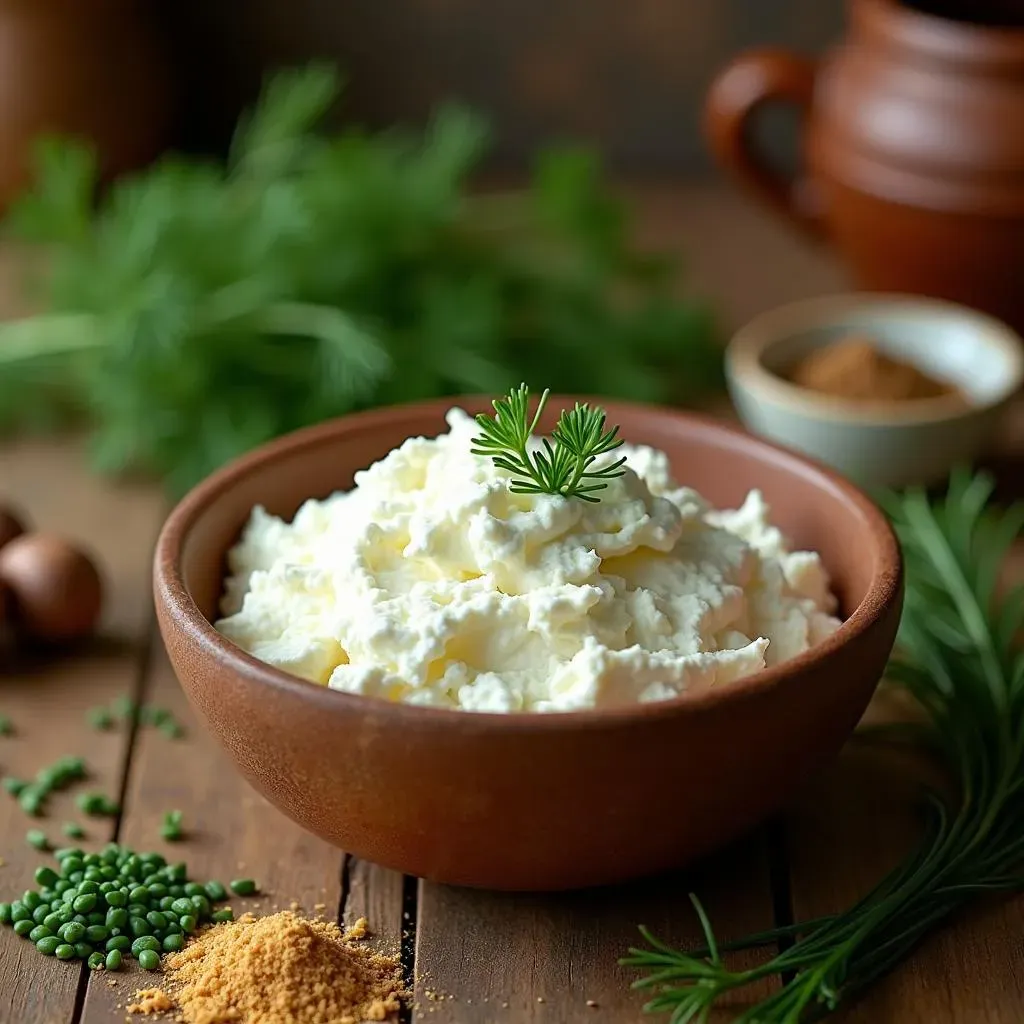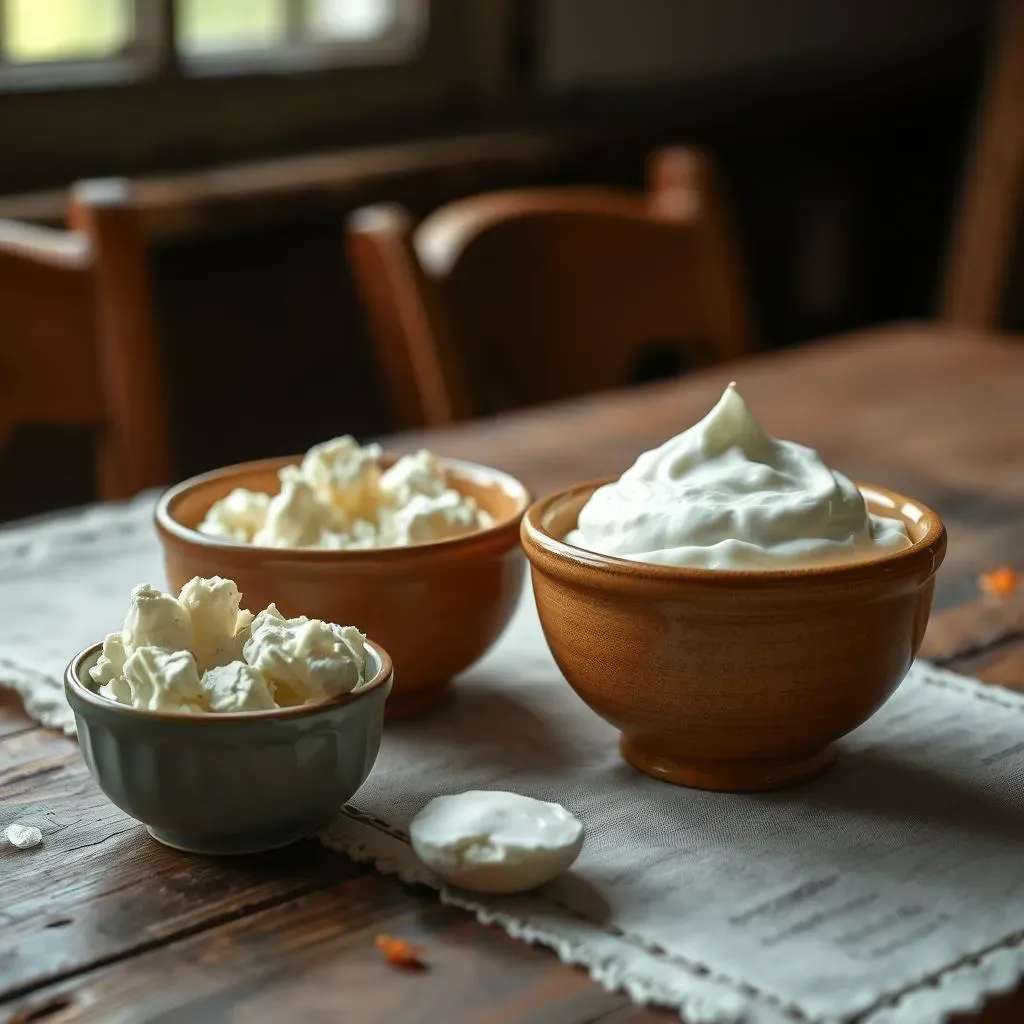Table of Contents
Ever stared blankly at a recipe, realizing you're missing a key ingredient – sour cream? Don't fret! We're diving into the age-old question: can you substitute cottage cheese for sour cream? This comprehensive guide will equip you with the knowledge to confidently tackle this culinary conundrum. We'll explore the nuances of using cottage cheese as a replacement in both sweet and savory dishes, examining its impact on texture and flavor. We'll dissect the differences between cottage cheese and sour cream, providing clear guidelines on when a substitution works best and when it might be a recipe-wrecking disaster. Whether you're baking a decadent cheesecake or whipping up a tangy dip, this article is your ultimate resource for mastering the art of ingredient swaps. Get ready to unlock a world of culinary flexibility and discover if cottage cheese can truly step up to the plate (or bowl!) as a worthy sour cream substitute. Prepare to become a kitchen wizard!
Can You Substitute Cottage Cheese for Sour Cream in Baking?

Can You Substitute Cottage Cheese for Sour Cream in Baking?
Cottage Cheese in Cakes and Muffins
So, you're baking a cake or a batch of muffins, and you realize you're out of sour cream. Can cottage cheese save the day? In many cases, yes! Cottage cheese, especially the low-fat variety, adds moisture and a subtle tang that can surprisingly complement many baked goods. Think of it as a secret weapon for adding a creamy texture without the heavy richness of sour cream. The key is to blend it until it’s super smooth; you don't want those little curds showing up in your perfect cake. Remember, though, cottage cheese's flavor is milder than sour cream's sharp tang, so it might not be the best swap for recipes where the sour cream plays a starring role in the flavor profile.
However, don't just throw in a cup of cottage cheese and hope for the best. You might need to adjust other ingredients, such as reducing the amount of liquid in the recipe to compensate for the moisture content of the cottage cheese. Experimentation is key! Start with a small test batch to see how it turns out before committing to a whole cake. It’s a bit of a culinary adventure, but one that can yield delicious results.
Recipe Type | Cottage Cheese Suitability | Considerations |
|---|---|---|
Cakes (light and fluffy) | Good | Blend until smooth, may need to reduce other liquids |
Muffins | Good | Adds moisture, blends well |
Cheesecakes (rich, dense) | Fair | May affect texture, test a small batch first |
Cottage Cheese in Quick Breads and Other Baked Goods
Beyond cakes and muffins, cottage cheese can also work in other baked goods, although you might need to adjust the recipe more significantly. For instance, in quick breads like banana bread or zucchini bread, cottage cheese can contribute to a moist and tender crumb. Its slightly tangy flavor can even enhance the overall taste, especially in recipes that already incorporate acidic ingredients like lemon or buttermilk. However, because cottage cheese is a relatively dense ingredient, you might need to add more leavening agents (baking powder or baking soda) to ensure the bread rises properly. Always start with a smaller quantity of cottage cheese than the sour cream called for and increase gradually if needed.
Remember, every recipe is different, and the success of your cottage cheese substitution will depend on the specific ingredients and baking method. Don’t be afraid to experiment. Start by substituting a portion of the sour cream with cottage cheese – perhaps half. Observe the results and adjust accordingly in your next attempt. Baking is a science, but it's also an art, and a bit of trial and error is part of the fun!
- Blend cottage cheese until completely smooth for best results.
- Reduce liquid in the recipe slightly when substituting cottage cheese.
- Consider adding a touch of lemon juice or vanilla extract to enhance flavor.
- Always start with a small test batch before making a large quantity.
Troubleshooting Cottage Cheese Substitutions in Baking
Even with careful planning, you might encounter some unexpected results when substituting cottage cheese for sour cream. One common issue is a slightly denser texture. If your cake or bread is too heavy, try reducing the amount of cottage cheese in your next attempt, or increase the amount of leavening agents. Another potential problem is a less pronounced tang. If the finished product lacks the desired sour cream tang, consider adding a splash of lemon juice or vinegar to the batter to boost the acidity. Remember, even experienced bakers sometimes have to tweak recipes to get the perfect results.
Don't let a few setbacks discourage you. Baking with cottage cheese as a sour cream substitute is a learning process. Each attempt will teach you something new about how this ingredient behaves in different recipes. Keep detailed notes of your experiments, including ingredient quantities and observations on texture and flavor. The more you practice, the better you'll become at adapting recipes and achieving delightful results.
Using Cottage Cheese as a Sour Cream Substitute in Savory Dishes

Using Cottage Cheese as a Sour Cream Substitute in Savory Dishes
Using Cottage Cheese in Dips and Spreads
Now, let's talk savory applications! Cottage cheese can surprisingly shine in dips and spreads. Its creamy texture and mild tang make it a surprisingly versatile base for things like spinach and artichoke dip, or even a seven-layer dip. The key is to blend it very well to eliminate those pesky curds and achieve a smooth, almost-velvety consistency. You can also add herbs, spices, and other flavorful ingredients to create a unique and delicious spread. Think about adding some roasted red peppers and a touch of cumin for a Southwestern twist, or maybe some chives and dill for a classic herby dip. The possibilities are endless!
Keep in mind that cottage cheese is less tangy than sour cream, so you might want to amp up the acidity with a squeeze of lemon juice or a dash of vinegar. Adding a bit of mayonnaise or Greek yogurt can also help improve the creaminess and texture. Don't be afraid to experiment with different flavor combinations to discover your perfect cottage cheese-based dip. It's a fantastic way to use up leftover cottage cheese and impress your friends with your culinary ingenuity!
Dip Type | Cottage Cheese Modification | Flavor Enhancements |
|---|---|---|
Spinach Artichoke Dip | Blend until completely smooth | Garlic powder, Parmesan cheese |
Seven-Layer Dip | Mix with a little mayonnaise for creaminess | Taco seasoning, salsa |
French Onion Dip | Blend with sour cream for a balanced flavor | Dried onion soup mix, fresh parsley |
Cottage Cheese in Sauces and Dressings
Moving beyond dips, cottage cheese can also be a secret ingredient in sauces and dressings. In creamy sauces for pasta or vegetables, the mild flavor of cottage cheese blends seamlessly, adding a richness that's surprisingly satisfying. Its texture, however, might need a little help; you'll likely want to blend it until perfectly smooth to avoid a grainy sauce. Consider adding a touch of cream or milk to further enhance the creaminess and create a velvety texture.
For dressings, cottage cheese can be a lighter alternative to mayonnaise-based options. Imagine a creamy ranch dressing, but made with cottage cheese as the base. It can be a surprisingly delightful change of pace, offering a lighter, tangier flavor that's perfect for salads and vegetables. Again, blending is key to achieving a smooth consistency. Adding herbs, spices, and a touch of lemon juice can further enhance the flavor profile.
- Always blend cottage cheese until smooth for sauces and dressings.
- Add a splash of cream or milk to improve the creaminess.
- Experiment with herbs and spices to customize the flavor.
- Consider adding a touch of acidity (lemon juice or vinegar).
Cottage Cheese vs. Sour Cream: A Detailed Comparison for Substitutions

Cottage Cheese vs. Sour Cream: A Detailed Comparison for Substitutions
Cottage Cheese vs. Sour Cream: A Detailed Comparison for Substitutions
Let's get down to brass tacks: cottage cheese and sour cream are different beasts, despite their shared creamy texture. Sour cream boasts a higher fat content and a distinctly tangier, more acidic flavor. This tang is crucial in many recipes, providing a counterpoint to sweetness or adding a zing to savory dishes. Cottage cheese, on the other hand, is lower in fat and has a much milder, almost neutral flavor. Its texture is also different; while it can be blended smooth, it retains a slightly curdled quality even when processed. This difference in texture and taste significantly impacts how well it substitutes for sour cream.
Understanding these core differences is key to successful substitutions. In recipes where sour cream's tang is paramount, like in certain baked goods or dips that rely on that sharp, acidic punch, cottage cheese might fall short. However, in recipes where the sour cream contributes more to texture and moisture, cottage cheese can be a surprisingly effective stand-in. Think of it this way: sour cream is the star of the show in some recipes, while in others, it's a supporting player. Cottage cheese is better suited for a supporting role.
Feature | Sour Cream | Cottage Cheese |
|---|---|---|
Fat Content | High | Lower |
Flavor | Tangy, acidic | Mild, slightly tangy |
Texture | Smooth, creamy | Curdled (unless blended) |
Before you even THINK about swapping, consider the recipe's needs. Does it rely on sour cream's signature tang for balance? Or is sour cream mainly there for moisture and richness? For example, a creamy tomato soup might benefit from cottage cheese's mild flavor and added protein, while a cheesecake might suffer from its lack of tang and different texture. Always start small, substituting a portion of the sour cream with cottage cheese, and carefully assess the impact on taste and texture before committing to a full swap. Remember, culinary adventures are best approached with a bit of caution and a whole lot of experimentation!
Ultimately, the "best" substitute will depend on the specific recipe and your personal preferences. Don't be afraid to experiment, adjust, and embrace the unexpected results. After all, even culinary mishaps can lead to delicious discoveries! And who knows, you might stumble upon a new favorite recipe variation along the way!
- Consider the recipe's reliance on sour cream's tang.
- Assess the impact on texture – will the cottage cheese's curds be noticeable?
- Start with a partial substitution to test before committing fully.
- Adjust other ingredients (liquids, leavening agents) as needed.